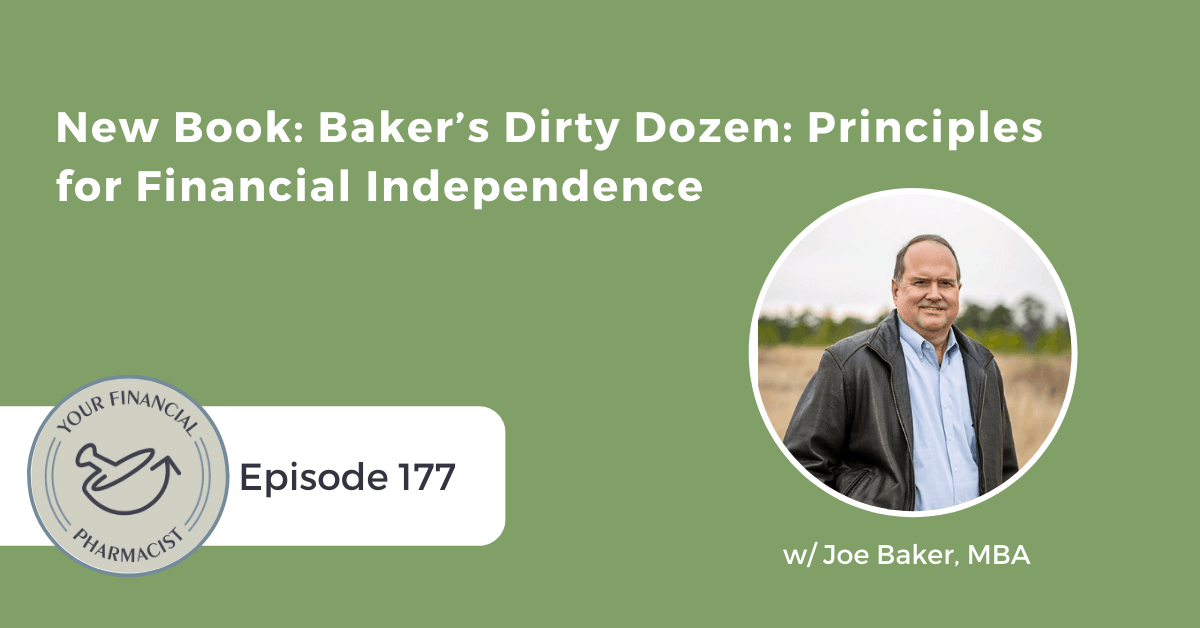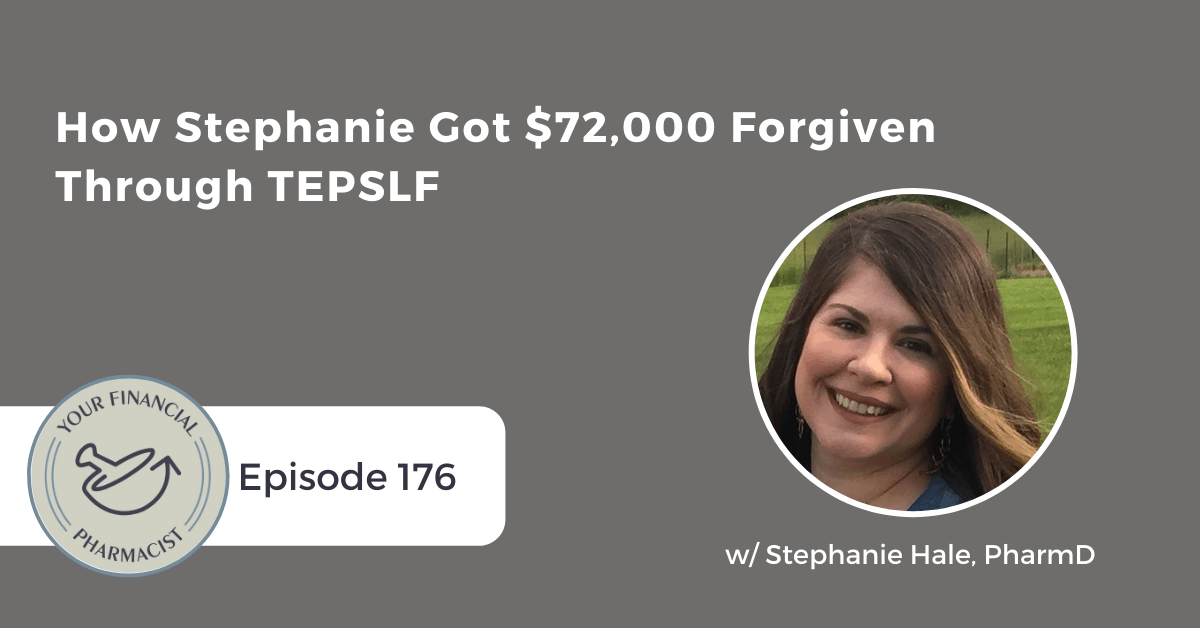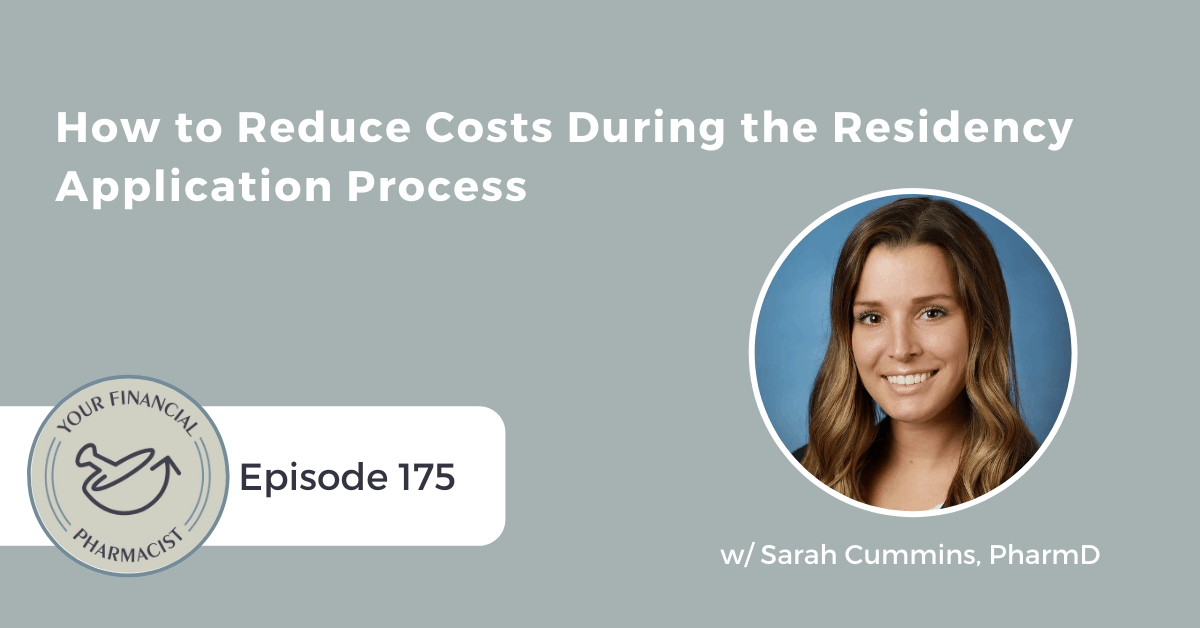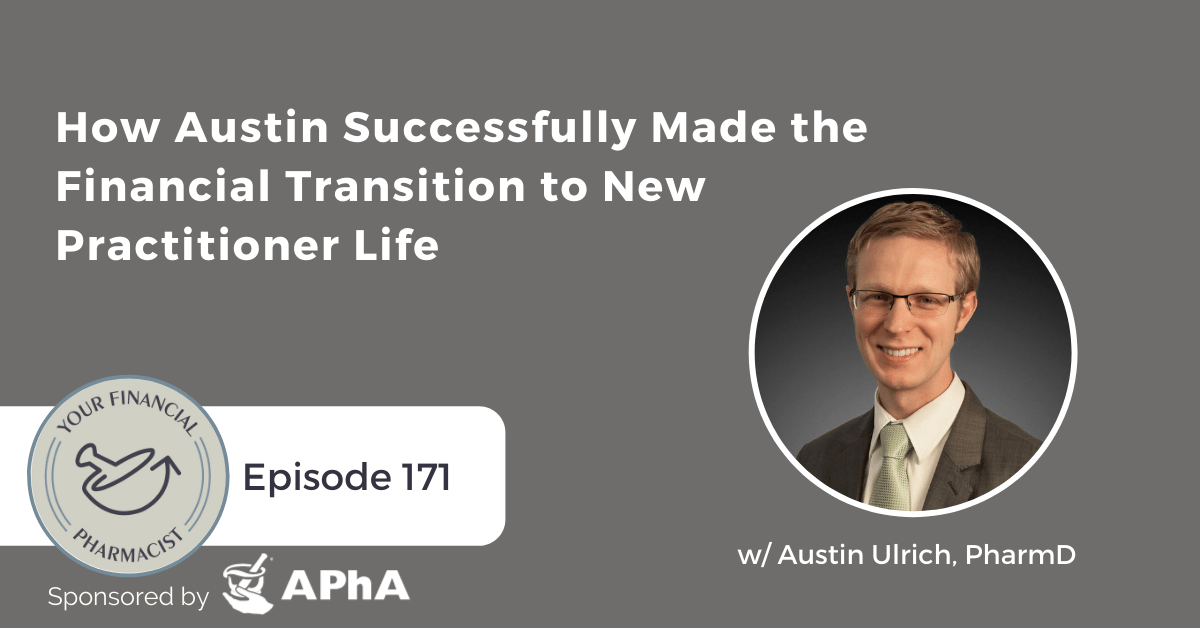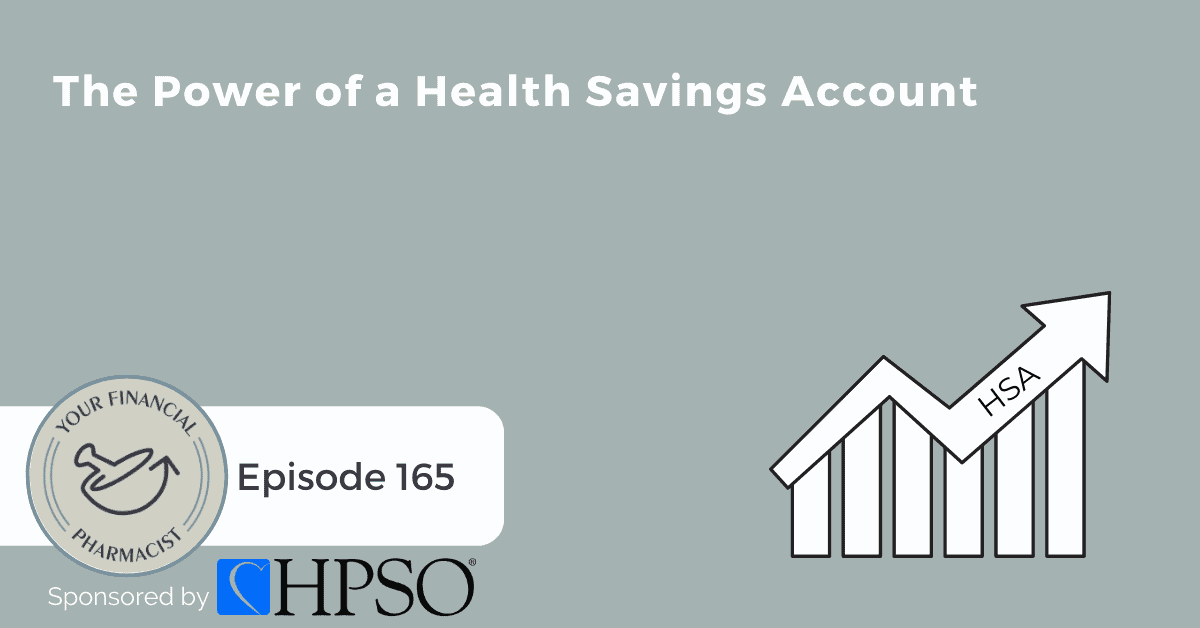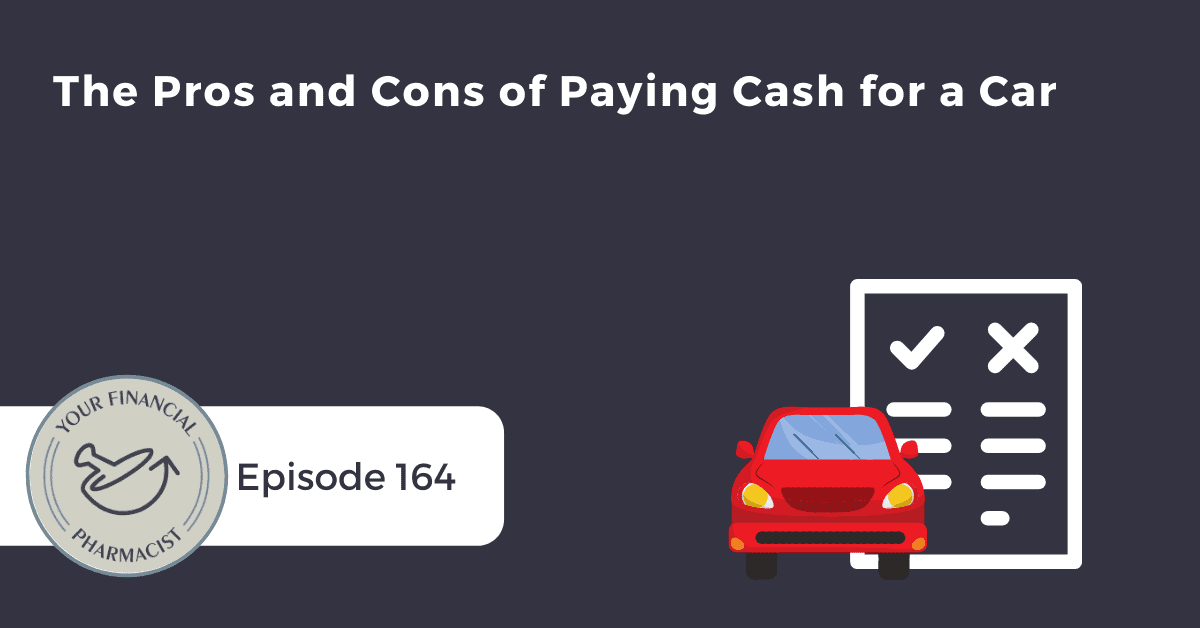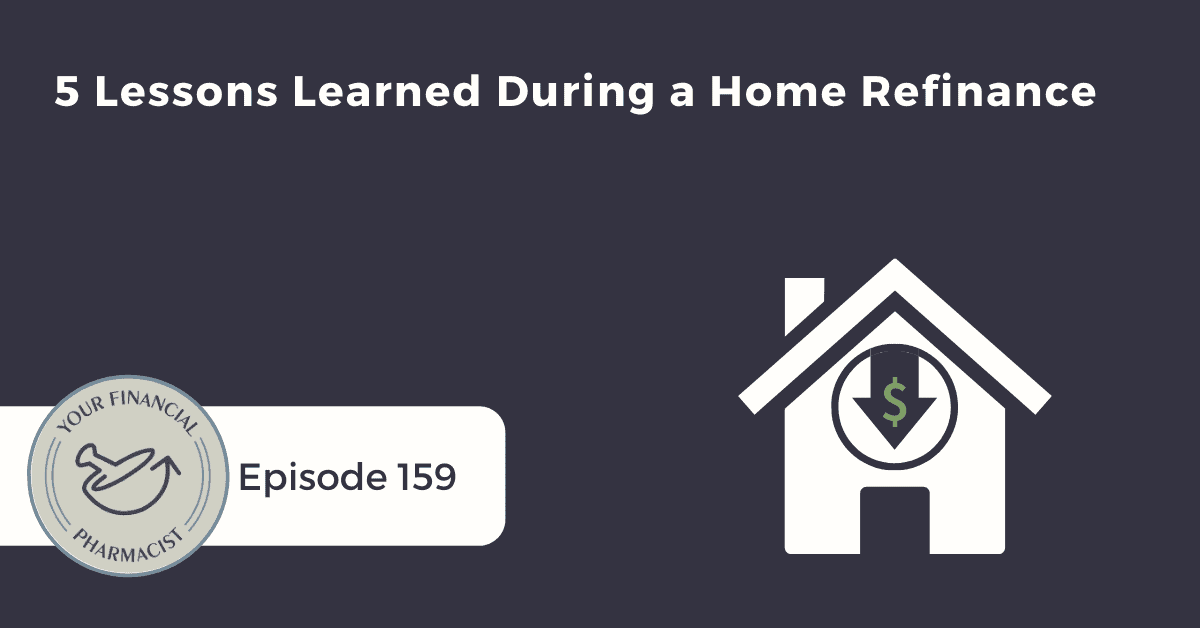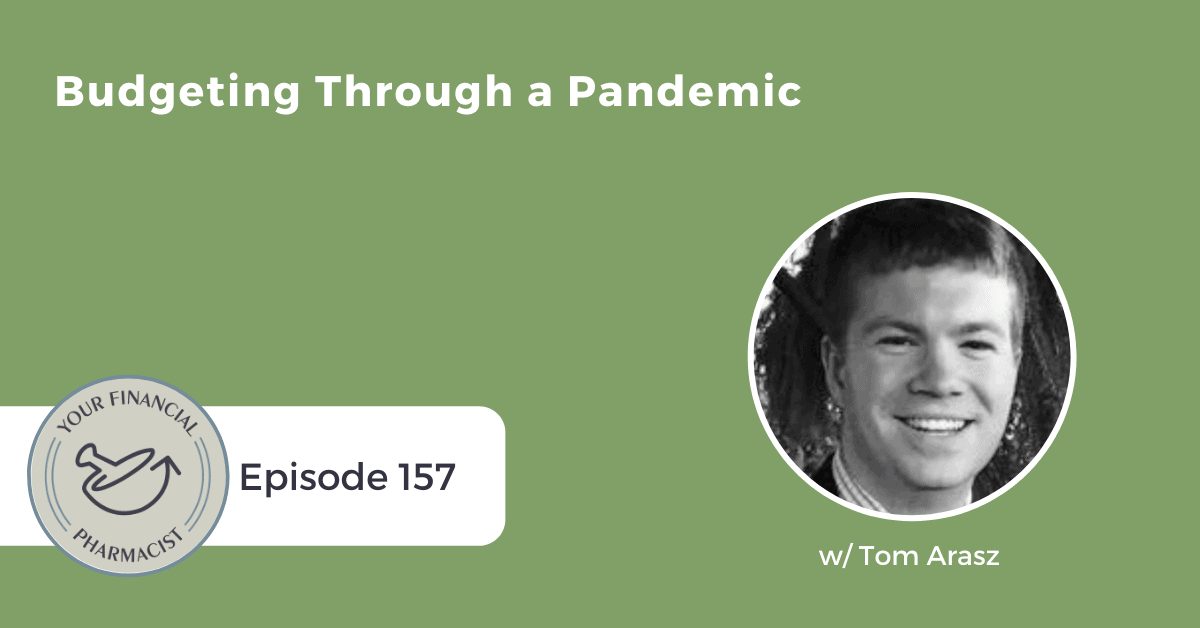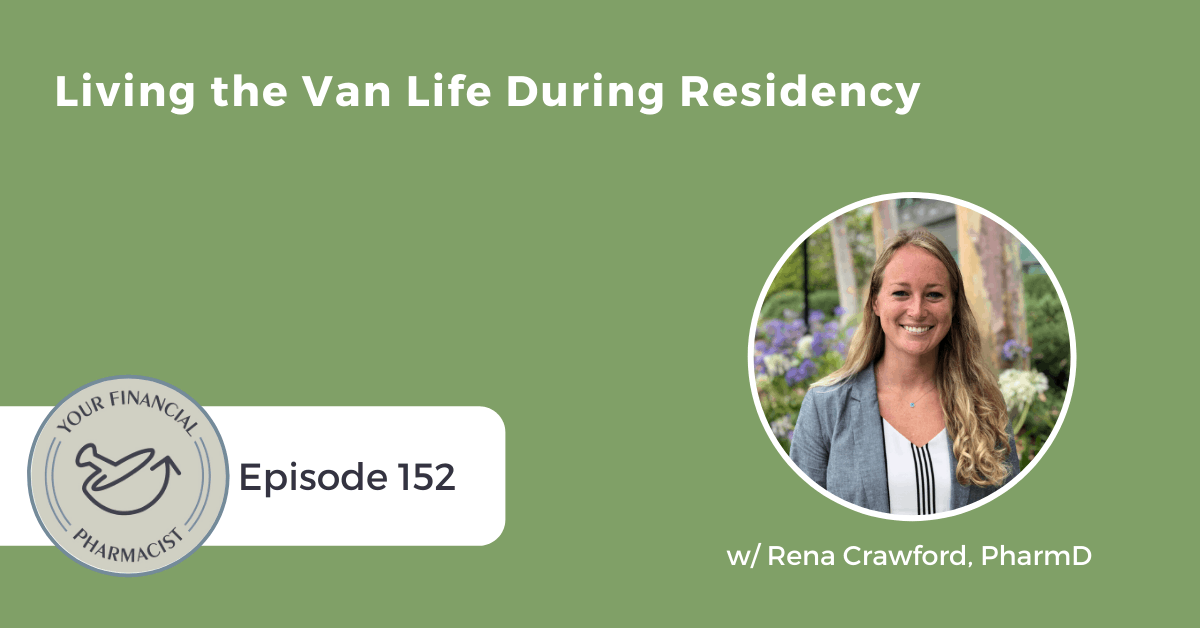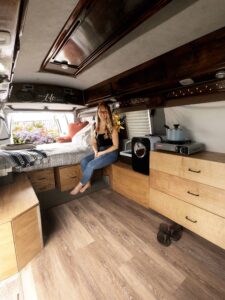5 Lessons Learned from Nate’s First House Flip
Nate Hedrick, the Real Estate RPH, joins Tim Ulbrich to recap the 5 lessons he learned from his first real estate investment flip. Nate digs into how he found the deal, how he ran the numbers, what went well and what didn’t and how he sees real estate investing fitting into his financial plan.
About Today’s Guest
Nate Hedrick is a 2013 graduate of Ohio Northern University. By day, he is a clinical pharmacist and program advisor for Medical Mutual. By night and weekend, he works with pharmacists to buy, sell, flip, or rent homes as a licensed real estate agent with Berkshire Hathaway in Cleveland, Ohio. He has helped dozens of pharmacists achieve their goal of owning a house and is the founder of www.RealEstateRPH.com, a real estate blog that covers everything from first-time home buying to real estate investing.
Summary
Nate Hedrick, the Real Estate RPh, got into real estate investing in 2016 after reading Rich Dad, Poor Dad by Robert Kiyosaki. This book inspired him to diversify his assets, so Nate pursued real estate investing as a way to do just that. He obtained his real estate license shortly after and started to work with and learn from real estate investors.
Nate has grown to love the BRRR method (buy, rehab, rent, refinance) which allows him and his wife, Kristin, to preserve their capital while continuing to grow their portfolio. Although Nate lives in Cleveland, Ohio, it’s difficult to find a BRRR property there. He connected with a partner in Michigan and was able to find a great deal. He purchased a 3 bedroom, 1 bathroom, 1,400 square foot single family home from a wholesaler for $8,000 that needed a lot of work done to it. Nate digs into the 5 key lessons he learned from flipping property:
- Run your numbers, carefully.
- Plan for something to go wrong.
- It’s not like HGTV.
- Prepare multiple exit strategies.
- Trust your team.
Nate digs into each lesson learned and explains why they are so important to remember if you are on your own real estate investment journey.
Mentioned on the Show
- YFP Concierge Service
- YFP 160: Navigating the Home Buying Process Through the YFP Concierge Service
- Real Estate RPh
- 5 Lessons I Learned Flipping My First House
- Rich Dad, Poor Dad: What the Rich Teach Their Kids About Money that the Poor and Middle Class Do Not! by Robert T. Kiyosaki
- Long Distance Real Estate Investing: How to Buy, Rehab, and Manage Out-of-State Rental Properties by David Greene
- BiggerPockets
- BiggerPockets Podcast
- YFP Financial Planning
- Schedule a Free 30 Minute Call with Nate Hedrick
- Connect with Nate Hedrick on Facebook
- Follow Nate Hedrick on Instagram: @realestaterph
- Connect with Nate Hedrick on LinkedIn
- YFP Facebook Group
Episode Transcript
Tim Ulbrich: Nate, welcome back to the show.
Nate Hedrick: Thanks. Always great to be here.
Tim Ulbrich: So we had you on not too long ago, Episode 160 where you actually took over the mic, interviewed Shelby and Bryce about their home buying experiences and working with you through the Real Estate Concierge service. So time for me to take the mic back as we go into this next episode. But how have things been going for you?
Nate Hedrick: They’ve been great. It’s been great. You know, COVID’s made everything a little trickier on both the pharmacy and the real estate side, but it’s still been doing really well. And actually, Kristen and I are enjoying the extra time we’re getting with the girls here at home. So it’s been really great.
Tim Ulbrich: Absolutely. Definitely a silver lining I guess if there is one in the pandemic. You know, I’m guessing our listeners might be wondering how you as a opportunistic real estate investor are looking at real estate, the market, in terms of both what you’re seeing as an agent but also as an investor in the midst of the pandemic. So give us some insights from your viewpoint as both an agent and helping people get placed into homes as well as an investor. How is the pandemic impacting things on both sides?
Nate Hedrick: Yeah, it’s really interesting. There’s so many different aspects we could talk about. It could be its own show, quite honestly. But the highlights are that right as the pandemic hit, there was kind of a big lull. And then as we started to open things back up and the lockdowns started to end, we saw just a huge, huge seller’s market. Everybody wanted to buy, get into a home, and nobody was selling. And we’re still kind of fighting that, actually. The clients that I’m working with right now, I’ve got four houses under contract. And all of those were snap decisions. And it had to be very, very quick. So it’s still pretty much a seller’s market. I’m starting to see some slowdowns in some areas of the country. I was actually talking with a partner this week about some of the things that they’re seeing where a house that used to be sold within 24 hours is now sitting there for two weeks, which is — again, if you look back over the years, that’s nothing. But for what we’ve been experiencing, that’s kind of crazy. But I think the biggest thing to kind of watch for and where I’m taking a bit of a pause here for a little bit is just obviously the election results that are pending as we’re talking today and then where COVID’s going to progress over the course of winter. I think that will affect things in terms of renters being able to either buy or not or things like that. So there’s a number of factors that I think will be interesting to watch as we head into 2021.
Tim Ulbrich: Absolutely. And as our community already is — knows you and the work that you’ve been doing, and we’re going to continue that throughout the year into the new year, obviously going more into the spring and home buying season in 2021. So stay with us because there is a lot changing. You mentioned obviously the election. As we record right now two days post-election, results still not decided as we hit record. And then of course we’ve got the pandemic and everything else that may come at us that we don’t know at this point in time. So we’ll keep you updated. Hang with us whether somebody is looking to buy for the first time, whether they’re moving, whether they’re looking to jump into a real estate investing property or expand upon the portfolio that they have, we would love to be alongside of you in that journey. So Nate, I wanted to bring you on to today’s show because of a recent article you posted on your Real Estate RPH, and we’ll link to that in the show notes, called “5 Lessons Learned Flipping my First House.” And before we jump into those lessons, I’d love for you to first talk about how and why you got into real estate investing. So here, we’re talking about your first flip. But it’s not your first investment property. So why you got into real estate investing and ultimately, you know, why you decided to go this route in terms of flipping this home.
Nate Hedrick: Yeah, so that’s great. My whole real estate journey really started with the idea of wanting to be a real estate investor. If you go back, way back to 2016 when I first read “Rich Dad Poor Dad” and started getting into real estate investing books, I just — I caught the bug and was like, I’ve got to do this. And that led me to getting my real estate license for a number of various reasons. And I started working with investors to really start to learn the process and figure it out. But I’ve always wanted to do it. I think I look at it as a really great way to diversify our assets and to create passive income. And I think, again, when you change your mindset a bit from I want to work for 50 years and hopefully my retirement’s enough at the end to I want to work now to figure out how to make sure it’s enough at the end, it makes it very, very clear that real estate investing is almost necessary, in my opinion. So it really, it was kind of an inevitability. And then how I was going to do it really changed the more Kristen and I talked about our plan together and what opportunities were available to us. And so for us, one of the things that we read about early on and really liked was the idea of what’s called a BRRRR. And we’ve talked about this on the podcast before, but the idea is that you buy a place, you fix it up, you rent it out, and then it’s worth more, so you refinance it, do a cash-out refinance at the bank. And then you pull that cash out of the deal, and you can repeat the process. And the advantage of that method is that you preserve your capital. So if I saved up $50,000, let’s just say, and went and dropped that as a 25% down payment on an investment property, that’s great. And I’ve got a property in hand. But now I have no money to do the next deal. And I have to go start saving that all up again. And that’s actually what we did for our very first deal was we went out and we bought a basically a turnkey property for our very first investment property. And that was great except that, again, there was nowhere to go from there. We had $0 in the bank for the next one. And so it became a process of looking for a way to do the BRRRR method. And that way we could start preserving that capital. And so that was where this flip idea came from. And really, we’ve been following that process ever since.
Tim Ulbrich: That’s great. And I know one of the conversations you and I have had on more than one occasion is the balance between paying off student loans and investing. And as I’ve shared on the show before, this is probably the most common question I get if we’re doing a session where we’re speaking on various topics: “Hey, should I be paying off my student loans or should I be investing?” And here, we’re obviously talking about real estate investing, which is just one pathway, one route of investing. But I sense that many other listeners are weighing this same decision, whether it’s real estate investing or more traditional investing, you know, how do I find this balance between paying off my student loans and ultimately beginning to save and invest for the future in whatever way that looks like. So how did you and Kristen reconcile and decide to move forward with your real estate investing plans while still working through your student loan debt?
Nate Hedrick: Yeah. And like you said, I think you said it perfectly. It’s a balance. It’s all about finding that balance and finding the risk tolerance and the comfortability that works for you. I think it’s very easy to sit back and look at the $100,000-200,000 in debt that most of our pharmacy friends here have and say, ‘I can’t possibly think about anything else right now. I’ve got to tackle that.’ But what we basically have done is we’ve really worked on getting those loans refinanced down to a very, very low level. I think my loans today sit at just under 3% —
Tim Ulbrich: Wow.
Nate Hedrick: — which if you look at — yeah, it’s fantastic. And I’ve refinanced them I think five times through — actually, most of those times through YFP. So thank you for all of the bonuses.
Tim Ulbrich: You might beat Tim Church soon, yeah, on the refinance record.
Nate Hedrick: I’m close. I’m close. And the idea being that if you can get that interest rate, at least in my opinion, if you can get that interest rate down low enough, you’re basically matching inflation at some point. And so it’s not free money, but it’s about as close as you can get. And so what we feel comfortable doing was get those loans to a manageable amount, get them to a payoff monthly that we could really feel comfortable handling, and then once that interest rate was low enough, now you start to look at, OK, well if I put $1,000 onto that loan or I put $1,000 into an investment, whether that be an investment property, a stock, whatever, which of those two strategies builds your net worth faster and makes you feel better at the end of the day? Because a lot of it comes down to can you sleep at night if you have these outstanding loans? And so while we’re very aggressively working on paying down those loans, we just have different buckets of money that we’re allocating our extra resources to. And a lot of those happen to be on the investment property side.
Tim Ulbrich: That’s great. And I think we should, you know, put out there that when we talk about finding this right balance, you know, from my perspective, we’re doing it under the assumption that one is doing their homework, understanding the risk, understanding the upside. We’re obviously going to talk about an opportunity here that you’ve invested in and others that we have featured on the show that have had good outcomes. But that certainly can be good, cannot be good, depending on a lot of different factors. And so finding that balance, finding what you’re comfortable with, making sure you’re feeling confident in what you’ve learned in that process, finding good mentors, all things that we’ve talked about before on the show, are really important as you’re dabbling really in any part of your financial plan but here, as we talk about investing in real estate. So let’s dig into the flipping experience in more detail. So tell us about this particular opportunity. Where was the property? How much was the purchase price? Tell us about kind of the square footage, the bedrooms, and what you’re working with as you got that property under your name.
Nate Hedrick: Yeah, great. So we actually — so as many of our listeners know, I live in Cleveland, Ohio. And so we had previously been looking to purchase our investment properties here. Well, the market’s actually really good in Cleveland for investors. And so it’s actually been ticking up year over year. And so it’s becoming more difficult to find a good BRRRR property here. And again, that our goal, right? We could go out and buy a property with a big down payment and 25% down and so on, but we wanted to BRRRR a property. And so I started reaching out to some pharmacists around the country that I know were in the investing space, had a couple different conversations with a couple different partners — and actually, Tim, you and I were involved in some of those discussions, which was great.
Tim Ulbrich: Yep.
Nate Hedrick: And connected with a partner up in Michigan. And we were able to talk to them about, you know, the properties that are going on in Michigan and what they were doing from an investing perspective, and basically when I looked at it, it felt very much like Cleveland, but everything was half price. And this particular area was set up where it was still kind of hitting that resurgence, it’s still a bit early I think to call this area kind of up-and-coming. It’s on its way. But that actually made it a good target for us because we could get in on a much lower price point, we could fix the property up for a lot less and still accomplish that goal of achieving a BRRRR without needing to have $100,000 in the bank.
Tim Ulbrich: Right.
Nate Hedrick: So when we looked at that, we said, this kind of fits all of our criteria, we think that the upside is there from an appreciation standpoint, properties can cash flow, we looked at all the different parameters that I think are important in assessing a location for investment properties. And then we just happened to get kind of lucky on finding a good deal. We got this deal through a wholesaler. The — I don’t mind sharing we bought the house for $8,000.
Tim Ulbrich: Say what?
Nate Hedrick: If you had asked me before I started as a real estate investor if you could buy a house for that cheap, I would have said, “No, that’s like a car. You’re talking about a car.” But no, we bought this house for $8,000. And it’s a 3-bedroom, 1-bath. It’s about 1,400 square feet. Little single family with two bedrooms upstairs, one bedroom downstairs. And it was an absolute disaster, as you can probably imagine. And we can get into the details, but yeah. It was worth $8,000 when we bought it. It was pretty bad.
Tim Ulbrich: And Nate, you know, someone who is listening — and I know early on and I certainly still consider myself very much a newbie in this space. And I look at a property like that — and we’ll talk more about the numbers about what it’s currently valued at for rent and all those types of things. And our listeners will hear a huge margin between $8,000 and where it’s currently valued. And I think people might look at that number and be like, why would somebody even sell that if they saw the opportunity themselves? Why wouldn’t they do the rehab? Why wouldn’t they flip it or hold onto it and rent it? So tell us a little bit more about that wholesaling relationship and ultimately why a wholesaler would want to pass this on if you look at this as a good investment opportunity. Why wouldn’t they just keep it themselves?
Nate Hedrick: Yeah, yeah. Great question. I think it varies a lot depending on the individual. In some cases, you’ve got someone that either has paid — they can’t afford their mortgage any longer, they can’t afford their taxes anymore, they’re simply looking to offload that property so they can get their finances back under control. Or you’ve got someone that either a family member passes away and now you’ve got a different family member trying to take care of a property, and they’re just trying to settle the estate, they’re not interested in becoming a real estate investor, they just want to get rid of this property. This particular property had — the person had actually moved down with family down south and basically abandoned it. They had zero interest in taking care of it any longer. And I really don’t think they had the ability to do much with it, quite honestly. So it sat there for a long time. As we’ll talk about, it had some interesting problems inside. But it sat there for awhile. And basically, they just said, “I want to get rid of this. Here’s what I need to pay off my mortgage, and here’s where I’m at.” And that was it.
Tim Ulbrich: And I don’t want to miss too — and I know you can speak to the value of the relationships, of the networking, of the partnerships, but as you told the story — and I’m sure many people outside of Ohio would look at maybe even a Cleveland market and be like, please, can I get a deal at those prices. And obviously you’re looking at numbers a little bit differently and saying, OK, Cleveland is going up — and of course we’re talking about relative to other markets — Cleveland is going up, and here’s another opportunity out of area, out of state, which to some listening may feel very uncomfortable if they haven’t had experience with doing out-of-area, out-of-state investing. And one of the things that really jumps out to me with this example is the value of having good partnerships, having a good network of folks that can help not only identify some of these opportunities but also that may be an expert in that local area or market and can give you some assurance on other experience that they’ve had as it is perhaps an uncomfortable territory. So tell us about that part of the journey. Was that an uncomfortable pathway for you and Kristen in terms of out-of-area investing? And how did you ultimately say, hey, it’s worth it even if we can’t see it or put our finger on it. For me, I was surprised at how easy it was to invest out of state. I think one of the things that helped was that we had previously purchased an investment property. So I walked through it, understood what that looked like. It’s a very non-emotional decision. And so it’s much, much easier to look at the numbers, look at the math, talk to the contractors and kind of make a decision based on that. You don’t have to walk in it because you’re never going to be living there. And so that made it a bit easier. Again, it also really helped that we had awesome partners and boots on the ground that could really help with that. I think no matter where you’re investing, whether it’s two streets away from you or two states away from you, you need to have that awesome partnership and have those people that can actually give you the real information that you need unless you yourself are that expert. So again, if I’m buying a house here in Cleveland, I don’t even use a real estate agent. I represent myself because I can be that expert in this area. But if I was buying anywhere else, I’d have to have all those experts anyway. And so this wasn’t that different just having those people in place.
Tim Ulbrich: Yeah, and I would recommend too — we’ll link to it in the show notes — but Bigger Pockets, among the many resources they have, they have a book on out-of-area investing that I found very helpful and insightful just getting you to think about it but also the importance of some of the systems and the processes and how to ultimately be able to manage and invest in opportunities that may not necessarily be in your backyard. So let’s dig into the five key lessons that you learned along the way. And again, so we’ll link to this in the show notes your article that you published on this at Real Estate RPH so folks can read more and check out the other content that you also have out there, which is fantastic. So five key lessons that you learned along the way through this flipping experience: No. 1, run your numbers carefully. So tell us more about this and really why it’s so important and ultimately the strategies you used here for your first flip.
Nate Hedrick: Yeah. So just like we talked about, it’s a business decision when you’re buying investment property. This is not an emotional, ‘Oh, I don’t know if I like that kitchen,’ like, whatever. It doesn’t matter. You need to run your numbers and focus on those, which some people might really like because if you’re a data person, if you’re an analytical person, this actually makes it really easy. So like I mentioned, we were trying to use the BRRRR method to flip this property and then rent it out. And one of the things that the BRRRR method really focuses on is when you do that cash out refinance, the goal is to pull all of your investing money back out, right? You want to be able to recycle that capital. And so what most lenders will do is they’ll give you a loan at 75% loan-to-value or LTV. And that 75% loan is based on the after-repair value, or the ARV. Sorry, we’re throwing all these acronyms at you. But the idea is that you want to buy a property, fix it up, rent it out, and then it needs to be worth a certain amount of money so that 75% of that amount is more than or equal to the amount of money that you invested.
Tim Ulbrich: Right.
Nate Hedrick: So if you’re buying a property and let’s say it’s $100,000 when it’s all said and done, and you’re going to refinance that $100,000, getting $75,000 from the bank. You can’t spend more than $75,000 to buy that property, fix it all up, pass all your permitting, all that stuff needs to be done for under $75,000. So the numbers are actually fairly easy. We actually went out and had an appraiser come out to the house — actually before we bought it. And we said, “Look, if we did all of this work,” and we laid out really detailed notes about here are the things that we’re going to do in the kitchen, here’s how the bathroom’s going to look, here’s how the flooring. We actually provided pictures from other flips that my partner had done. And we said, “Look, if we do all of this work, what do you think it will be worth based on the market conditions, based on the property size and all that?” And once we had that number, we were able to start working backwards and say, “OK, 75% of that number is this. That’s how much we can spend. Let’s see if this deal makes sense.”
Tim Ulbrich: That’s great. So you mentioned, let’s get more specific about this deal. And obviously we’ll use round numbers, not a perfect calculation. But you mentioned buying it from the wholesaler for $8,000, you mentioned getting that up front estimated after-repair value, that appraisal, and then obviously you had the investment to actually do the work. And then of course there’s a reality of what that appraisal may come in and ultimately when you do that cash out refinance, which you’re not yet there, right? That six-month window, you’re still waiting on that?
Nate Hedrick: Yep, we’re getting close. So basically the end of December is when we’ll be eligible, so we’ll probably refinance around then or beginning of January.
Tim Ulbrich: Wow, that went quick.
Nate Hedrick: I know. I was thinking the same thing the other day. I’m almost behind at this point because I haven’t started the process yet. I’ve talked to some lenders, but it’s not there yet.
Tim Ulbrich: Yeah. So if you bought it for $8,000, talk us through then if your goal as the investor is to try to get as much or perhaps all of that cash back out so as you mentioned at the beginning of the show, you can go ahead and do this again — and we should clarify here, you mentioned the 75% loan-to-value. If you accomplish that and you get all of your cash back, you still essentially — obviously you have a mortgage on that property, but you have essentially 25% equity in that deal. So you know, we’re not talking about leveraging full tilt here. You still would have some margin if the market were to flip or go down. So you have a little bit of wiggle room. So talk us through the numbers here and whether or not you’re able to accomplish that or come close.
Nate Hedrick: Yeah, and I really like — that’s a good point because I think a lot of people look at this, and they go, oh, you’re overleveraging like crazy. But you’re right. We still have 25% equity in that house once that refinance is done. And so I feel really confident that that’s a comfortable place to be. That’s like buying a house with 25% down payment, which is more than most people do. So yeah. We’re going to feel good about that. So the house itself was $8,000. Then there was a wholesaler fee, a sizeable wholesaler fee. We’ll call that several thousand dollars. And so that’s basically a finder’s fee for the wholesaler. And these can vary anywhere from — I’ve seen them as low as $1,000. And I’ve seen them as high as $25,000 on some deals. Where basically that wholesaler is saying, “I found this deal for $8,000. And I’ll let you buy it for $8,000, but you’re going to pay me some amount to basically give you that great deal.” So we had to pay the wholesaler’s fee on top of that. And then once we got the appraisal done, they were looking at this, and they said, “We think that based on the level of rehab that you’re going to do and the properties in the area and so on, we think that the house will be worth around $75,000 when all was said and done.”
Tim Ulbrich: Wow. OK.
Nate Hedrick: Yeah, which is great. Now, again, this place was utter trash when we purchased it. So there’s a lot of work to be done, but what we looked at that and said, “OK. Well if we’ve got $75,000 of potential property value, 75% of that is about $56,000.”
Tim Ulbrich: Yep.
Nate Hedrick: So there’s a lot of room in there for us to start making some rehab decisions and finding a way to make ends meet.
Tim Ulbrich: So on this deal — and again, I’m oversimplifying a little bit here, Nate, but to follow the numbers — you buy is for $8,000, you have a wholesaler’s fee, a finder’s fee, and then you’re looking at that $8,000 plus the wholesaler’s fee and then any margin or really room up until that 75% number, $56,000, as your number of when you look at estimating rehab costs and other things, and obviously things could go better than you expect, things could go worse, you’re trying to anticipate where that may or may not go, making sure you have margin. But as long as you stay under that $56,000 number, if that appraisal holds around $75,000, and you do a cash-out refinance at 75% loan-to-value, you essentially that whole $56,000 back out of the deal and get all of the money back. Is that simple math? Am I following correctly?
Nate Hedrick: Yep. You’re spot on. That’s exactly the goal, and that’s how we went into it.
Tim Ulbrich: OK. So you know, one of the other things that I know I think about as I hear you talk about this, I’m sure our listeners are, is hey, Nate, I’m a pharmacist. Like I have no idea how to estimate rehab costs. So this is great as you’re talking, OK, I get the property for $8,000, I pay a wholesaler fee, I get all that. But I can look at a property, I can say, eh, good, not so good, maybe really bad, not as bad, really good, not so good, but that’s the — my Lichert scale ends there, right? I don’t have much differentiation of what I can define in terms of how much is needed or certainly things that may be seen versus unseen. So how do you as an investor either estimate those costs or make sure you’re working with the right people that can help you get a good estimate on what those costs will be?
Nate Hedrick: Yeah, I’ll be honest with you, I’m also fairly terrible at estimating rehab costs. I walk around with my clients as a regular real estate agent, and they say, “Nate, this looks broken. Any way — like what would it take do this?” I have no idea, we should ask a contractor. And that’s what we really did with this property is I trusted my team more than anything.
Tim Ulbrich: Yeah.
Nate Hedrick: And we built that, again, based on a lot of relationships and based on past experience. I was able to talk with the individuals that I work with and seen that they had done this work before. And so when we actually let our contractor walk that place, they were able to say, “Look, I think based on everything you’ve got going for you and all these unknowns that we still have, let’s start working out budget details.” And we really took it line item-by-line item to really break down everything that was going to go into those costs that we could feel good about our offer and feel good about how much we were going to be potentially spending.
Tim Ulbrich: Awesome. OK. Great stuff. So that’s No. 1, run your numbers carefully. And I just want to echo here too, you know, one of the things I know that really resonated with me early on with the very limited experience I have is the importance of really trusting and running your numbers. And I think it’s easy to look at something like a property that is $8,000 and then you look at wholesale fee and you’re like, what the heck? The deal’s only $8,000, why is the wholesale fee, you know, whatever that amount is? As you mentioned, there could be a big range. But run the numbers. I mean, ultimately, you’ve got to figure out like is that justified or not? And you know, obviously that person needs to be paid for the work that they’ve done in finding that deal. But if the numbers make sense, they make sense. If they don’t make sense, then you move on, you know? And I think that’s really part of the value of having a system to be able to run your numbers.
Nate Hedrick: Yeah, don’t get hung up on how much they’re making on the deal.
Tim Ulbrich: Exactly.
Nate Hedrick: I have seen deals with other investors where the wholesale fee is more than the purchase price of the property. And that feels like what the heck, this doesn’t make any sense. Why are they making more money than I’m buying the house for? But again, without them, you don’t have a deal to work on. So it’s not something to get hung up on. You’ve got to focus on the final numbers.
Tim Ulbrich: Alright. No. 2 is plan for something to go wrong. And oh boy, do you have some examples here with this property. So you know, tell us about why this is important for plan for something to go wrong both financially as well as maybe just your sanity. And you know, what went wrong with this deal? And how did you plan for it?
Nate Hedrick: Yeah, so this is something that, again, I really underestimated in my head what this was going to look like. I think we’ve all watched flipping shows on TV, and all like — again, I’ve read all the books, I thought I knew everything. And so when we walked into this property, I was like, OK, we’ve got to estimate all these rehab costs, and then we’ll set aside $2,000 for that thing that goes wrong. And really, again, really leaned into my partner on this one. And he said, “Look, with all of the unknowns that we have, we need to set aside a considerable amount of change for a potential problem to come up.” And so just to start giving you some real numbers, we originally budgeted I think around $25,000-30,000 for the full rehab. And then on top of that, we added an $8,000 contingency plan, which is a huge chunk. I mean, that’s like a third basically of our budget almost as a what-could-go-wrong factor. And to me, that felt really large and I was like, man, we’re never going to need that $8,000. That’s even bonus money as far as I’m concerned. But again, my partner was like, “Look, set it aside, put it in the numbers. Trust me. If we need it, you’re going to be so happy you did that up front.” And again, I learned a lot from that because I wouldn’t have set aside $8,000. And I’ll tell you, by the end of the deal, we ended up using about $6,000 of that entire contingency budget. So it’s a really good thing I listened to him and set that extra money aside when running the numbers. So we had a couple things that — a couple different things to go wrong. And actually one that I didn’t even get to put in the article because it happened early last month, so about a month ago. So I’ll tell you about that in a minute. But there was a number of issues, and I put them all in my article, but one of the biggest ones that I think was really surprising to me was that there was trash all over this house. I mean, like hoarder level trash up the walls and everywhere. And so there was a lot of unknowns what was under that garbage. And as we moved all that junk out and had actually the cleaning crews come in and take care of everything, realized that the walls and the floors themselves had been rotting underneath that stuff. There were entire areas where you could see from one room to another through the wall that had basically fallen apart. And so we did not anticipate that level of damage down that far. And so almost all the walls had to be removed, replaced, patched. We spent over $4,000 more on our budget for walls than we were anticipating. And again, that’s just one of those things that you don’t know it until you get in there, really. And that became kind of a bigger problem than we anticipated.
Tim Ulbrich: And if I remember correctly, that was the major thing. But you had other things that maybe folks here would be like, it is major, but obviously in the perspective of what you just mentioned, relative to that. So you had quite the issues with fleas.
Nate Hedrick: Yes.
Tim Ulbrich: And even some more minor things that may not be expected, which is having crews available to paint and the heat of the summer, not being able to stay as long as you thought they would, and that delayed some of the timeline, which of course time is money when you’re talking about these types of opportunities. So collectively, as you went through that as a first-time, were you shocked? Surprised? Was it a, ‘it is what it is’? Or did having that partner involved also help reassure of hey, I’ve been through these before and it stinks, but it’s not the end of the world?
Nate Hedrick: Yeah, I think, again, that’s the whole point of this kind of point 2 here is plan for those things to go wrong. That way you’re not going to be surprised. I think every time I got a call from my partner and said, “Hey, here’s what’s going on on the property this week,” it wasn’t like, oh no, now the whole deal is ruined. We really felt like, well, that’s awful. But we’ve planned for it, let’s move forward and get it fixed. The biggest, like the nagging — you mentioned the fleas. That problem drove me absolutely bonkers. I was so upset with that. It was one of those things where, again, I planned for a problem. But I didn’t plan for it to be so hard to fix, right? LIke everything else I can throw a little bit of money at it and it goes away. This took two different exterminators, four separate treatments, two weeks of no job time. We actually had a fifth treatment after all that was said and done to make sure that when the new tenants moved in, they felt really comfortable with the whole place and it was absolutely bug-free. It was only I think — all said and done, I think it was like $600 for all of that, which is not that big in the grand scheme of things, but it was the biggest hassle to get that fixed.
Tim Ulbrich: Sure.
Nate Hedrick: And it just, it was the problem that would not go away.
Tim Ulbrich: Yeah, and I think if I remember, I had a similar issue with another property, and it was not as much on the cost side but just the coordination and then the time where if they’re coming in to spray and that you’re coordinating with other people working in the home, there has to be some space there as they’re doing their work. So more of a nuance, right, then anything. And of course you want the new people to feel comfortable as well.
Nate Hedrick: Yeah. That was big for us too, right? Like we wanted to provide really nice housing for somebody. And I don’t know about you, but I am not moving into a place that has fleas. And so we wanted to be 100% certain that we had completely taken care of the problem and that we had something in place that if anything did come back, we had a very fast action plan to basically mitigate that going forward. So we did a lot of work to make sure that was taken care of. And again, it was just a pain to get it all done.
Tim Ulbrich: Alright. No. 3, it’s not like HGTV. So talk to us about what you mean here.
Nate Hedrick: Yeah, so again, I think it’s really for us to watch all the flipping shows and get this idea of you buy a property, you put in the highest end everything, you make it camera-ready, and then you make money and it’s easy. And I think when Kristen and I went into this, we were very quick to look at the kitchen, look at the bathroom, and say, “Oh yeah, we’ve got to do a tile backsplash, we really want to upgrade this to elevate this rental to be like the best in this area.” And again, talking to our partner, talking to our contractor, we quickly realized that if you follow the HGTV plan, you’re probably going to blow your budget. There are absolutely areas where it makes sense to do that and put in everything as high end as possible, but you’ve got to look at your market. Again, we bought an $8,000 house. I can’t spend $8,000 on tile for the backsplash. That doesn’t make any sense. So we really had to kind of reign ourselves in — and I think I put in the article, the goal is to make it the nicest house on the block, not the nicest house in the city. So really trying to kind of take off the HGTV lens and move it onto OK, what makes sense for a rental? What’s going to get us the best return on investment? And what’s going to make this a really comfortable, safe place for that person to live? One of the examples of this that I think kind of exemplifies what we were looking to do, we actually had bought — we wanted all stainless steel appliances, right? Kitchens and bathrooms sell, so that made sense for us. We wanted all stainless steel appliances, upgraded kitchen. And we actually went out and bought some of these through the 4th of July sale at Home Depot at the time. So we said, “Great. We got this deal.” Well, COVID shut the world down, obviously, over the summer. And that delayed pretty much everything coming overseas, which most of these appliances were. And there was a huge backlog on appliances basically all summer long. And we got to the point where we were at the end of July, we were trying to get this place rent-ready. And the appliances kept getting pushed back. I would get a phone call every other week, and they would delay them by another week and another week and another week, and it was just, it was getting so frustrating. And so we said, “Look, these are going to be things that don’t allow us to rent the house. We’re not going to have a kitchen for anyone to go into.” So we actually had to pivot and start looking for some local deals on some appliances. And unfortunately, we weren’t able to find the stainless steel that we wanted. Now, we got really nice, high end appliances that were in great condition, but they’re not that, again, HGTV look that I think we were going for. And we had to get over that. We had to get past that and say, “Look, this is a really nice, functional kitchen. And it probably doesn’t truly hurt our rent value, quite honestly.” It might hurt our refinance a little bit because it’s not nearly as nice as the house that has the stainless steel, but it’s still going to accomplish our goals, and we’ve got to be OK with that. And it took some time to be able to pivot and make that mindset change.
Tim Ulbrich: Good stuff. And No. 4 here is preparing multiple exit strategies. And I really appreciated this being able to be a fly on the wall with you and your partner in this deal, to hear this conversation, to hear the two of you talk about the importance of exit strategies and having options and why that is so important. So tell us about how you viewed the exit strategies and also how you think about this more broadly as you’re investing in a property.
Nate Hedrick: Yeah, so one of the things that’s been drilled into my head listening to Bigger Pockets and reading about investing strategy and so on is that you always want to go into an investment with multiple exit strategies, whatever that looks like. If you’re buying a place to flip it, you should make sure the numbers also work as a rental. Conversely, if you’re buying a place as a buy-and-hold, you should make sure that it works as an Airbnb or something else, right? You want to make sure that it has a secondary plan in case what you were intending goes wrong. And so when we got into this house, we said, well, we actually need to have at least two exit strategies. And we actually developed three throughout the course of this plan. And so when we walked into it, we say, we can either buy it and hold this place, do the BRRRR method like we intended to, or the market is so hot right now, we should look at this as a potential flip opportunity as well. And so we really went into the deal with those two mindsets. Like this is either going to be a flip or it’s going to be a buy-and-hold BRRRR. And up until — we were probably halfway through the rehab and we still hadn’t really decided what made more sense. And at that point, we said, we’ve got to talk about this and figure out the plan. And we developed another plan. We said, well, we’re halfway through. We’ve gotten done with all of the big, scary stuff, right? Like the roof had been looked at, the furnace, all the big, scary stuff had been taken care of, all the trash had been moved out and so on. And we said, this place is pretty ready to go. It’s not fixed up by any stretch, but it’s ready to go. And so we looked at the idea of potentially selling it as what I call a prehab.
Tim Ulbrich: Yep.
Nate Hedrick: Which is where you’ve gone in, you’ve bought it for a certain price, you’ve fixed it up to a point where it’s very saleable to somebody who wants to come in and finish the work. And so we thought, you know, if we can find an investor that’s interested in buying this at this stage, we might still be able to turn a pretty nice profit and then not have to worry about the inspections and the permitting and all the stuff that comes at the end. So we even at one point had three exit strategies. Obviously we eventually decided to follow the BRRRR method, and we have a renter in there right now and all that. But throughout the course, we allowed ourselves to have other strategies and exit opportunities just in case they made sense at some point. It really made sure that we limited our risk and opened up our potential for opportunities.
Tim Ulbrich: And what are you looking for, Nate, for if you’re considering, hey, am I going to flip this or am I going to hold this and follow kind of the BRRRR method we’ve been talking about? What are some of the factors that are helping you make that decision?
Nate Hedrick: Yeah, gosh, that’s a — there’s a lot, right? So for us —
Tim Ulbrich: Another episode?
Nate Hedrick: Yeah, it’s another episode. No, it’s a great question, though. For us, it came down to look, if we’re going to spend all this time, effort, risk, money, we have to get a significant amount of return on it. And so if I’m putting in — again, I talked about almost $40,000 on a rehab, that’s a sizable risk. And we took a lot of risk to get there, right? We bought an $8,000 trash property. It better be something that we get something out of at the end. And so when we were assessing it, we said, look, if we can get to a flipping profit that is significant enough to justify that risk, then maybe it’s worthwhile. The other thing that I looked at is that, again, this market, I really want to be involved in this market. I want to hold property there. We’re already starting to talk about our next deal in the area. And so I was very set on trying to retain this property if that made sense in any stretch. And so again, the process was simply evaluate the potential for return and weight that against the risk that was put in and the amount of capital that was put in up front to get to that level of return. And again, it just became a business decision, which made more sense?
Tim Ulbrich: Good stuff. And No. 5 here is trust your team. And this is something we’ve talked about on previous episodes, building a team that you can trust and obviously that being an important part of this discussion as you’re building your real estate investment portfolio. So tell us about your team, what did it look like, how did you find those people, and what’s your advice for people that are looking to create their own team?
Nate Hedrick: Yeah, and I think we’ve talked about this a bit as we’ve gone through. It really started with that partner and making sure that I had somebody that was boots on the ground that could help us get coordination. Because from that partner came the contractors, that came the real estate agent, actually. We worked with that partner as well to find property managers that they recommended, and so I was able to interview property managers based on their recommendations. And then that property manager, again, kind of bringing in the real estate agent piece, they were able to recommend some people along the way for various things from title to making sure that the permitting was done correctly. And then of course, we had — on kind of my end — we had the insurance agent, I had to make sure that we got this all properly insured and under umbrella policies and all that other stuff. We had to bring in our financial planner and our accountant. Actually, I got to call up Tim Baker and Paul over at YFP and say, look, guys, here’s what we’re doing. And Paul had to get his extra notebooks out for me because I always bug him with weird questions. But we said, look, this is what we’re trying to do. Help us work through this, make sure it’s going to make sense for our financial plan personally. So all those different people are really essential and finding each one varies based on where you’re doing this, what you’re doing specifically, and what your needs are. But a lot of it starts with kind of that one person on the ground. And again, in our case, it was that partner. In most cases, it’s usually going to be your real estate agent or your property manager. And so if you are looking for a place either out of state or even locally, I really recommend starting with that solid real estate agent, that person that understands investment property because they’re going to be the one that’s going to connect you with all the people that you need. And that’s really, really essential.
Tim Ulbrich: Yes, so important for the reasons you mentioned, having a good team in place, have the right people in your corner. I was just talking with a pharmacist real estate investor in North Carolina this past week, and one of the things he shared was as they are still relatively early in their journey — I think they’ve got 3 or 4 deals now under their belt — what they’re finding is as they have continued on that journey, they’ve identified other folks, and as they’ve identified other folks, one of whom had become a partner, that that had then brought other opportunities that were now coming to them. And you hear this all the time on Bigger Pockets where people say, you know, once you get momentum and you show that you’re a good investor and you do things the right way, ultimately, these relationships will start to take off and you often find that deals start coming your way, which really puts you in a different position, obviously, to be able to grow and scale the work that you are doing. So there you have it, five key lessons that Nate learned along the way of this investment property. No. 1, run your numbers carefully. No. 2, plan for something to go wrong. No. 3, it’s not like HGTV. No. 4, prepare multiple exit strategies. And No. 5, trust your team. And again, we’ll link to that article that he posted on his blog over at Real Estate RPH so you can check out the show notes at YourFinancialPharmacist.com/podcast, find this week’s episode, and you’ll see that information there. Nate, one of the notes I made as you were talking was there had to be a lot of time invested here. So talk to us about you’ve got a young family, you’ve got a full-time job. Like you’ve got other things going on. So give us a sense of the time commitment and ultimately how you justify that time as you looked at this opportunity.
Nate Hedrick: Yeah, just like most of my side hustle life, it’s a lot of early mornings and late nights. So again, it was funny. I think every morning early, I got up and had emails going out for all of the real estate activity that I’ve got going on. But this was one of them. And then every night kind of the same thing. And again, by having the proper people in place, the partner, the contractors, you know, all the people that are actually doing all the work, I mean, I’ll be honest, I’ve never — I have yet to set foot in this property. And I don’t know that I ever will. There’s no need to because I’ve got people on the ground that can do that kind of work. And so the time invested for me is actually not that extensive. It’s really just decision-making time and then letting those decisions play out through the professionals that we’ve put in place. So you know, it was decisions with Kristen and discussion with Kristen at night, sending out an email, sending a follow-up email in the morning, usually. And then that was pretty much the whole day. The worst thing was if I had a phone call over lunch or something to talk through an issue with our contractor or whatever. But that’s about as much as was necessary. I think if you put the right systems in place, you’d be surprised how much little time is actually required to do all this work.
Tim Ulbrich: Well good stuff as always, Nate. And we appreciate you having you back on the show. And I’m sure it won’t be the last time. And appreciate you giving us kind of the inside look into your own person journey and your willingness to be transparent with that and certainly to share that information to be able to help others that are evaluating this as an opportunity in their own personal financial plan. So what’s the best way for our listeners to connect with you if they want more information about your journey or perhaps they’re also interested in the Real Estate RPH-YFP concierge service.
Nate Hedrick: Yeah, absolutely. Head on over to RealEstateRPH.com. You can actually find me, I’m all over your site too, Tim, on YFP. But Real Estate RPH, you can find us. Get connected with our concierge service. That’s actually the best way to get in touch. You can schedule a 30-minute phone call with me. We can talk about investing, we can get you hooked up with an agent, whatever you might need. That’s the best way to reach out to me. And then of course I’m on Facebook, Instagram, LinkedIn. Just find me there.
Tim Ulbrich: Great stuff. And for those that are looking to buy a home, if you go to YourFinancialPharmacist.com, you’ll see a section at the top called “Buy or Refi a Home.” From there, you’ll see an option to connect with an agent. That will take you to Nate and the concierge service. So the whole intent of that is to really be able to utilize Nate’s experiences as both a pharmacist as well as an agent as well as an investor here as we’re talking about, really to be someone that can help you along that process, that can pair you up with a trusted local agent in your market, and ultimately be there alongside of you throughout the journey. And so I think that is an important aspect and value of that service. And again, you can learn more at YourFinancialPharmacist.com, click “Buy or Refi a Home,” and then “Find an Agent,” and you’ll get to Nate’s information there. As always, to our YFP community, if you liked what you heard on this week’s episode, please leave us a rating and review on Apple podcasts or wherever you listen to the show each and every week. And I hope you’ll join us if you haven’t already in the Your Financial Pharmacist Facebook group. Over 7,000 pharmacy professionals committed to helping one another on their path towards achieving financial freedom. So thank you again all for joining, and have a great rest of your week.
Current Student Loan Refinance Offers
[wptb id="15454" not found ]Recent Posts
[pt_view id=”f651872qnv”]


